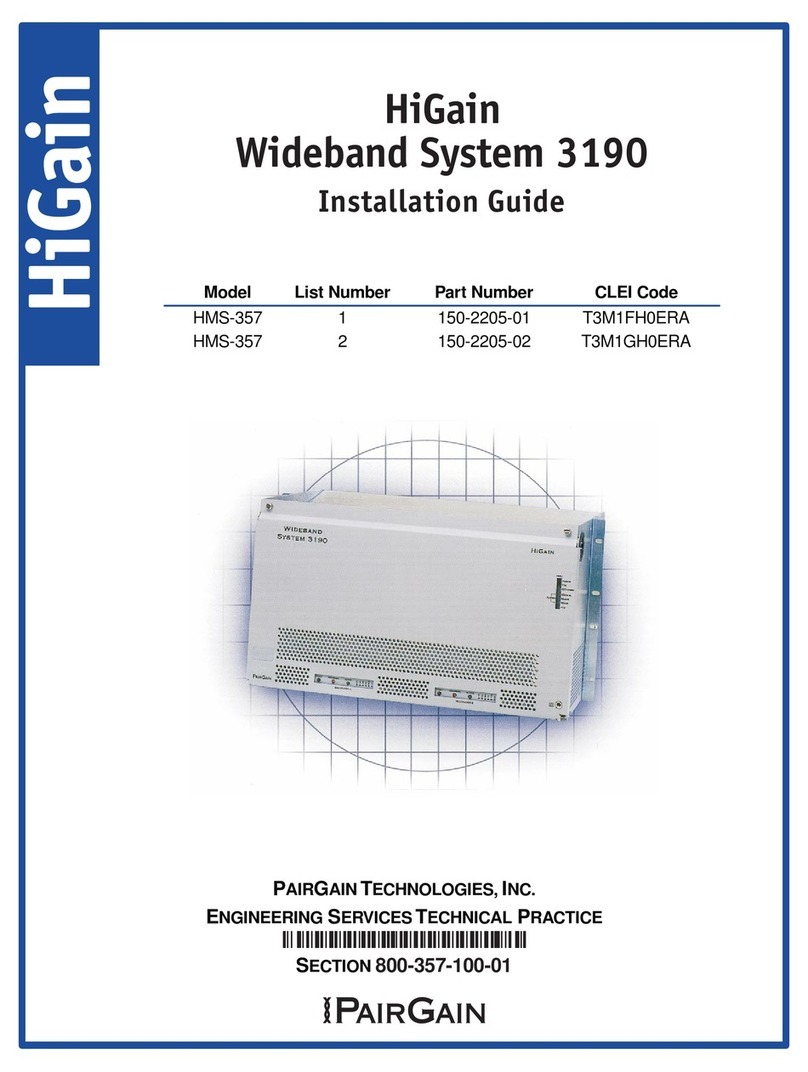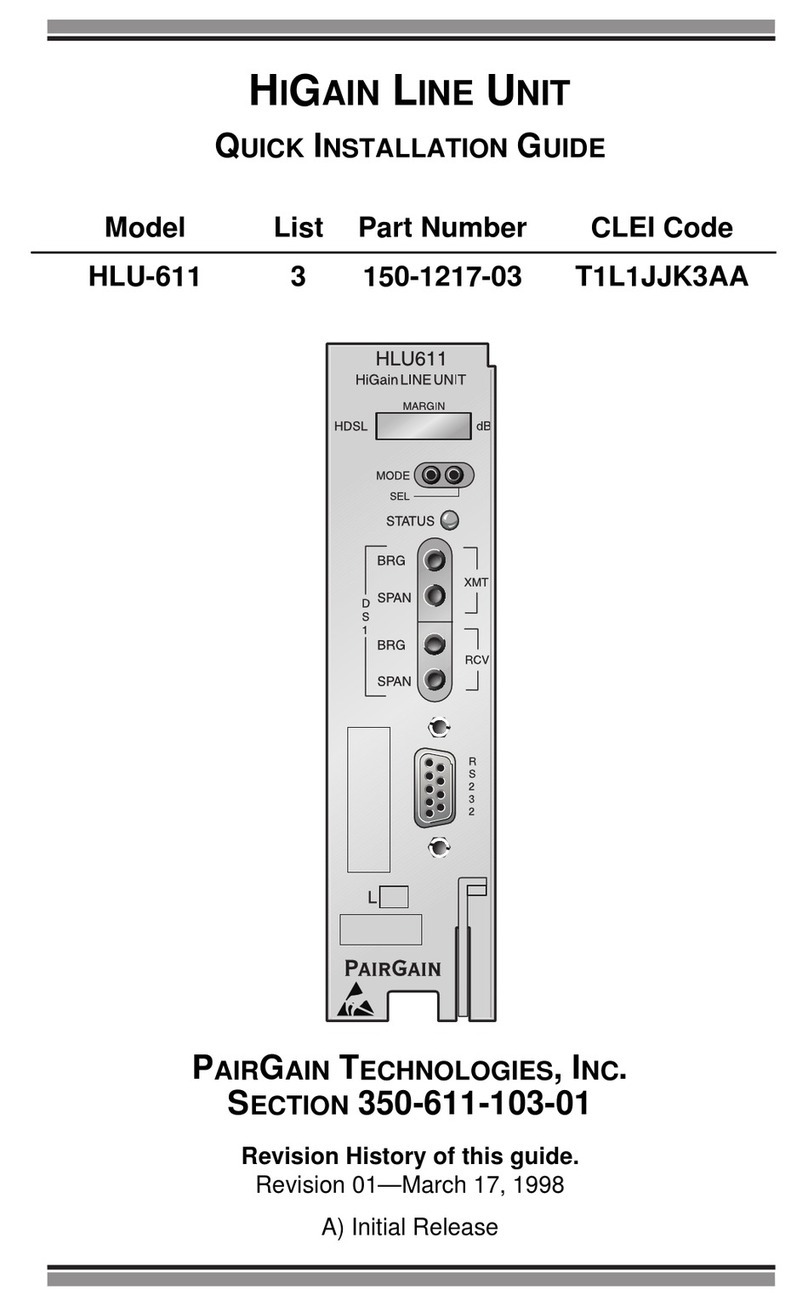
Section 363-703-104 June 5, 1997 Revision 01
Page 8 PairGain Engineering - Plant Series PG-Flex FLC-703
Table 2. FLC-703 COT Channel Unit Troubleshooting
Indication Problem Action
FAULT LED
ON The FLC-703 processor has
detected a fault. Remove and re-insert the Channel Unit. If the FAULT LED does not
extinguish, replace the Channel Unit.
Troubleshooting based on customer-originated trouble reports
No Dial tone,
Can’t Dial
• fault
RT or COT
Channel Unit
• facility short/open
• CO switch problem
1Lift the subscriber
air at the network interface. If dial tone is
resent
and
ou can
lace a call, refer the
roblem to the customer
er local
practice.
2If
ou cannot hear dial tone or cannot
lace a call at the network
interface (with the subscriber
air lifted), check for dial tone at the RT.
If dial tone is
resent, check the
air between the RT and the network
interface. If no dial tone is present, replace the RT Channel Unit.
3If the
roblem still exists, re-insert the ori
inal RT Channel Unit and
replace the COT Channel Unit. Test for operation.
4If the problem still exists, refer the problem to the CO switch.
Phone Doesn’t
Ring
•hi
h-resistance
subscriber line short
• fault
RT or CO
Channel Unit
• loop length too long
1Lift the subscriber
air at the network interface. If rin
in
is
resent,
refer the problem to the customer per local practice.
2If rin
in
is not
resent, check for rin
in
at the RT. If rin
in
is
resent, check the
air between the RT and the network interface. If no
rin
in
is
resent, re
lace the RT Channel Unit. If rin
in
is still not
resent, check a circuit on another Channel Unit. If rin
in
is still not
present, replace the Line Unit.
3If rin
in
is still not
resent at the RT, re-insert the ori
inal Channel
Unit and Line Unit. Test for ringing at the COT.
4Test for rin
in
into the COT from the CO switch. If no rin
in
is
resent, refer the trouble to the CO switch. If rin
in
is
resent, re
lace
the COT Channel Unit. Test a
ain for rin
in
at the network interface.
If rin
in
is still not
resent, contact PairGain technical assistance
er
section 9.
5Verif
the resistance of the co
er loo
between the RT Enclosure and
the network interface is less than 530 Ω.
Phone doesn’t
stop ringing
• fault
subscriber
instrument
• faulty RT Channel Unit
• loop length too long
1Test for rin
tri
at the network interface. If the rin
in
is tri
ed, refer
the trouble to the customer per local practice.
2If the rin
in
is not tri
ed, test for tri
in
at the RT. If rin
tri
does
occur, check the loo
for excessive len
th. If rin
tri
does not occur,
re
lace the RT Channel Unit. If rin
tri
still does not occur, contact
PairGain technical assistance per section 9.
3Verif
the resistance of the co
er loo
between the RT Enclosure and
the network interface is less than 530 Ω.
Can’t Hear,
Can’t Be
Heard
• subscriber problem
• fault
RT or COT
Channel Unit
1Lift the subscriber line at the network interface and check the si
nal
level. If correct, refer trouble to the customer per local practice.
2If the level is too low, check the level at the RT. If the level is correct
at the RT, check the
air between the RT and the network interface. If
the level is too low at the RT, replace the RT Channel Unit.
3If the level is still too low, re-insert the original RT Channel Unit.
4Check the level at the COT comin
from the CO switch. If it is correct,
re
lace the COT Channel Unit. If it is not correct, refer the
roblem to
the CO regarding the switch.
5If the level is still not correct, re-insert the ori
inal COT Channel Unit.
Contact PairGain technical assistance per section 9.





























